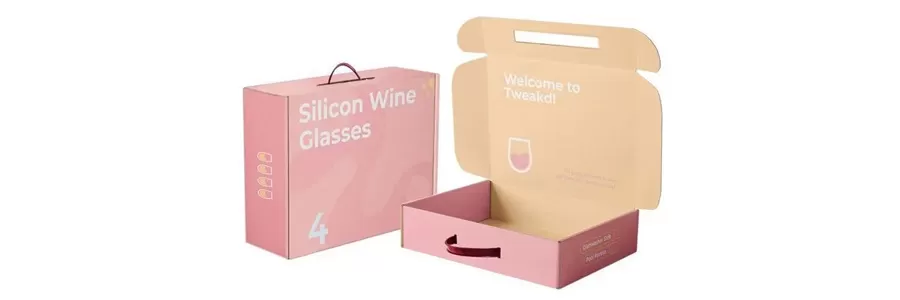With the increasing awareness of environmental protection, low-carbon living has become a trend. For enterprises, environmental sustainability is not only a global trend, but also a responsibility that must be undertaken during the development process. It is also an opportunity and driving force for innovative development and transformation of enterprises.
As an important tool for showcasing company characteristics, conveying operational concepts, and enhancing the relationship between partners, corporate gifts have become extremely important in terms of environmental protection. In this context, gift packaging is not only a display of the appearance of gifts, but also a key link to reflect the environmental protection concept of gifts. Starting from multiple aspects, achieving low-carbon gift packaging not only helps to reduce resource waste and carbon emissions, but also helps enterprises better demonstrate their sustainability and provide important assistance for green marketing.
The most common and easiest way to make gift packaging more environmentally friendly is to simplify existing packaging. This method not only reduces the use of materials, but also reduces energy consumption during production and transportation.
But if the gift itself does not belong to the situation of cumbersome packaging, or if some packaging has its functionality and is difficult to discard, then what aspects should we start from to make the packaging of our gift (product) more environmentally friendly?
1. Using more environmentally friendly and low-carbon materials to make packaging
Choosing environmentally friendly materials is a way to minimize packaging carbon emissions and achieve low-carbon packaging. For example, some companies use natural materials such as recycled paper or bamboo fiber to make gift boxes, which are not only biodegradable but also have relatively low carbon emissions during the production process.
But if the packaging itself needs to meet some functional requirements, such as moisture-proof and waterproof, sealing, etc., recycled plastics or other low-carbon materials are a more suitable choice. For example, RPET transparent boxes made from recycled mineral water bottles can be used as packaging for toy gifts, hardware gifts, electronic product gifts, and other products. Such packaging not only has good strength, but also can be printed with corresponding patterns. More importantly, the carbon emissions of recycled plastics will be much lower than ordinary plastics.
By using recycled plastic as gift packaging, the process of plastic recycling can promote plastic recycling and reduce the amount of waste plastic left behind in nature. With the development of the plastic recycling industry, in addition to PET, The recycling and utilization industry chain of plastics such as PP, PE, ABS, PA, etc. is gradually developing and expanding, and their utilization in gift packaging will also gradually expand to meet packaging needs in different scenarios.
In addition to the main packaging materials, many enterprises are also actively researching and developing auxiliary materials to help packaging become more environmentally friendly and low-carbon. The use of environmentally friendly adhesives, inks, etc. can effectively reduce the carbon emissions generated during the production process of packaging.

2. Design packaging with a single material to facilitate the recycling of packaging materials
The environmental friendliness of packaging can not only be reflected in the production process, but also in the ability of packaging designers to better enter the next recycling cycle after a gift packaging is discarded.
Using a single material to design packaging can greatly facilitate recycling after packaging is discarded. This principle has actually been widely adopted in packaging design in the food industry. At the end of 2021, Coca Cola launched its first unlabeled PET bottle called "Coca Cola Contour Label Free" in South Korea. This PET bottle has no label on the bottle body and is exclusively sold through online channels. Product related information is listed on the secondary packaging. This packaging improvement is due to the consideration that packaging composed of multiple materials will be more difficult to separate into a single material during the recycling and sorting process, so it can only be downgraded and recycled into some disposable products.
In the field of gift packaging, this rule also applies. If a gift box is entirely made of a single material and does not contain any other type of plastic or metal components, then the packaging can be directly recycled without the need for complex separation during the recycling process. This not only improves the recyclability of the packaging, but also greatly improves the recycling efficiency and reduces energy consumption during the recycling process.

3. Reusable design, allowing packaging to be used for other functions
Making gift packaging reusable through design is another important way to reduce the carbonization of gift packaging. Extending the service life of packaging can prevent environmental pollution from gift packaging waste in the short term and reduce the overall carbon emissions of gift packaging.
For example, a beautiful gift box can be designed as a storage box with drawers or small compartments, which recipients can use to store jewelry or other small items. Alternatively, using simple and aesthetically pleasing small suitcases or cloth bags instead of traditional gift packaging can greatly enhance the practicality of gift packaging itself, allowing it to be used as a separate bag after the gift giving process, whether for shopping or traveling.
Not only that, reusable packaging designs can also enhance the added value of gifts, making them appear more textured. This can reduce the occurrence of excessive packaging from another perspective, achieving a balance between practicality and environmental protection.
4. Emphasize the transportability of packaging design
At the beginning, many packaging designs may become too complicated, not only pursuing the ceremonial feeling of gifts, but also having some transportation and other needs. For example, because gifts need to be portable, it is often necessary to add a packaging bag outside the packaging box. Now, we can combine these functionalities through industrial design of gift packaging, balancing transportation and portability in packaging.
For example, designing a gift box with a handle that can be folded and stored without taking up storage space, but if it needs to be given as a separate gift, additional packaging bags or boxes can no longer be used to carry the gift.
In addition, if the packaging itself is strong enough and difficult to be stained, or easily restored after being stained, such gifts can be used directly during mailing without consuming logistics packaging, thereby reducing the use of other materials and carbon emissions in the overall gift giving process.
In addition, the production and transportation process of packaging itself can also be made more environmentally friendly through some functionalities. For example, to reduce packaging volume and weight, a gift box that is easy to disassemble and reassemble can be designed so that it can be laid flat during transportation and assembled upon arrival at the destination. This design reduces space occupation and energy consumption during transportation, while also lowering production costs.

5. Environmental design beyond technical means
Gift packaging is often an important channel for people to have their first impression of gifts, so in many cases, we also need to choose ways to make gift packaging look environmentally friendly at first glance.
In addition to using environmentally friendly and low-carbon technologies, companies can also convey this environmental concept in the aesthetic and fun design of packaging.
In most cases, companies will choose to clearly label the environmental characteristics of packaging materials on the packaging box. In this case, appropriately matching some concrete environmental stories or descriptions can make packaging design more efficient. Simple descriptions such as "This packaging is made from recycled plastic bottles" and "The carbon emissions reduced during the production process of this packaging are equivalent to a cedar tree absorbing 5 days of carbon dioxide" can quickly arouse interest and more conveniently help gift recipients understand the environmental friendliness of the packaging in front of them.
In addition, the design of gift packaging can also convey sustainable concepts to recipients through some direct interactions. For example, if seed paper is chosen as the packaging for a gift, after the gift is given, the recipient can plant the packaging as seeds. This intimate interaction with life and nature will greatly deepen the recipient's impression of the sustainability of the gift.
6. Summary
Low carbon gifts, as an important channel to carry and convey corporate values, are an external manifestation of the sustainable development concept of enterprises. After purchasing low-carbon gifts, enterprises often use them as a means of low-carbon marketing, leveraging the environmental impact of low-carbon gifts to shape the corporate social responsibility image and attract more customers and partners with common values. Using more environmentally friendly ways to package gifts can help recipients quickly recognize the environmental friendliness and level of dedication of the gifts during the gift giving process, thereby better internalizing the sustainable concept that companies want to convey through low-carbon and environmentally friendly gifts.








 Our packaging experts design and engineer innovative structures tailored to your product and branding.Explore design & engineering
Our packaging experts design and engineer innovative structures tailored to your product and branding.Explore design & engineering Our packaging design specialists create exceptional custom artwork that showcase and bring your branding to the next level.Explore design & engineering
Our packaging design specialists create exceptional custom artwork that showcase and bring your branding to the next level.Explore design & engineering Create physical samples and 3D interactive prototypes final product packaging before making a final decision.Explore design & engineering
Create physical samples and 3D interactive prototypes final product packaging before making a final decision.Explore design & engineering


























